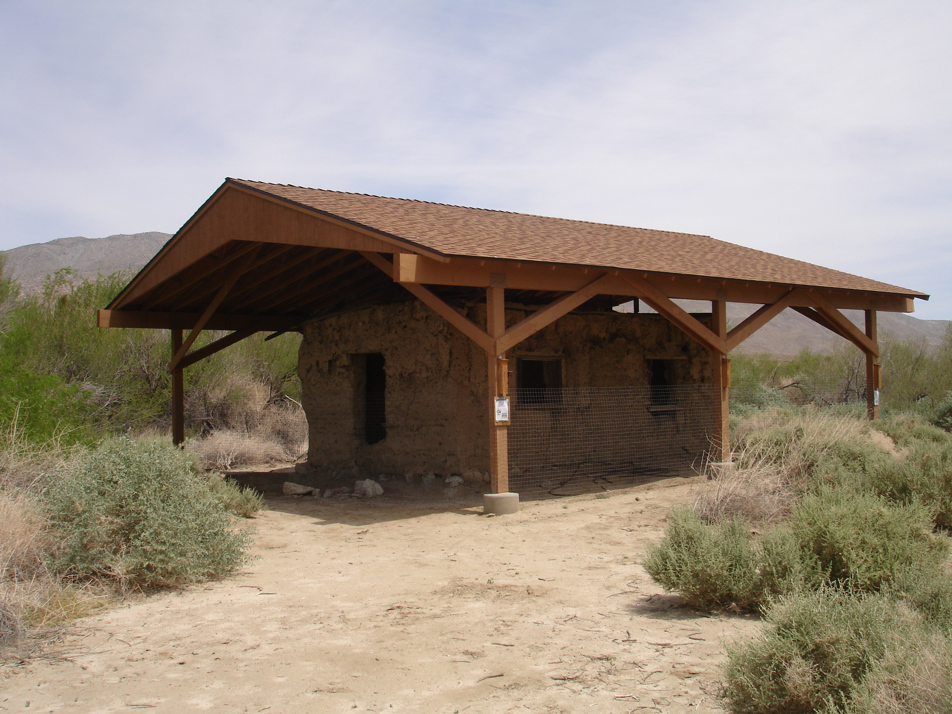Olin Bailey Earthen Structure Building Condition Assessment Report
Location:
Anza Borrego State Park, San Diego County, CAThe remains of the Olin Bailey earthen structure in the western portion of Anza Borrego State Park in San Diego County are an artifact of early occupancy and life in the region. The Olin Bailey earthen structure features numerous characteristics of vernacular and earthen architecture. These character defining elements include a simple rectilinear shape, the rustic adobe exterior wall finish, inset wood lintels, wood window and door frames. The house is believed to have been designed and hand-built by Olin Bailey, c.1905. The building’s simple earthen construction is typical of most structures in the desert environment. Few American Era vernacular examples of earthen construction have survived. The Olin Bailey earthen structure, which is in fair to poor condition, nevertheless retains a high degree of historic integrity and is a rare local exception.
The intent of the study was to review the architectural and structural condition of the earthen structure, identify elements of architectural and historical significance, develop recommendations for the treatment and stabilization of the resource and provide a cost estimate for additional stabilization. Based on the study Ms. Stiegler designed a preservation approach to maintain the structure “as is” in a state of arrested decay.
Treatment Recommendations
Protection was recommended to stabilize the walls against future earthquakes; to reduce the wall deterioration by cleaning out the joints in the stone foundation to permit moisture evaporation; to introduce pest deterrents for burrowing bees, birds and pack rats; and to collect, protect and store the remains of the roof and floor for future reinstallation. The recent mitigation effort of installing a roofed pavilion over the structure has provided the structure with substantially improved protection from weather erosion. Ms. Stiegler, with the State archaeological staff devised a method of mapping the fallen wooden debris. Facilitating after the installation of the seismic stabilization, the debris was reintroduced “as found.”











